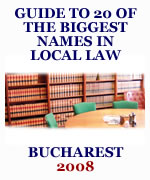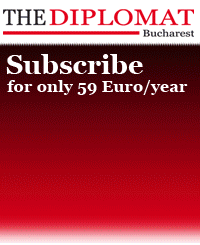Legal aspects of International Trademark Protection
|
 Because enhancing a brand’s value means holding on to or acquiring market shares, the protection and management of a company’s trademark portfolio should be key to any marketing policy. Trademarks are instrumental in communicating with the public- they may do more than just identifying the origin of goods, they may establish a relationship with the consumer based on trust, by staking the company’s reputation and offering a guarantee of consistent quality. International registration allows entrepreneurs to consider simplified and cost-effective global trademark filings, wherein a single application can result in protection in multiple jurisdictions.
Because enhancing a brand’s value means holding on to or acquiring market shares, the protection and management of a company’s trademark portfolio should be key to any marketing policy. Trademarks are instrumental in communicating with the public- they may do more than just identifying the origin of goods, they may establish a relationship with the consumer based on trust, by staking the company’s reputation and offering a guarantee of consistent quality. International registration allows entrepreneurs to consider simplified and cost-effective global trademark filings, wherein a single application can result in protection in multiple jurisdictions.
Accessing international protection. If a Romanian company plans to expand its operations abroad, it is advisable to register its trademarks internationally, to protect them in the event it develops a strong brand name and wants to preclude the use of identical or similar trademarks in other countries. In order not to be filed separately with each country-level registration office, national trademarks may be registered internationally, through two specially-administered systems: either (i) through the World Intellectual Property Organization (WIPO), for protection in a number of European and non-European states, or (ii) as a community trademark (CTM), through the Office for Harmonization in the Internal Market (OHIM), for protection in the EU. In the first case, the procedure involves applying to the WIPO in Geneva on the basis of a trademark already registered in a country member of the Madrid Union. In the second case, applicants may benefit of the EU principles of free movement of goods, persons, services and capital within the European Community and obtain uniform protection in all EU Member States. The WIPO system meets the particular needs of those who wish to obtain protection mainly in the countries outside the EU. These two types of registration are not mutually exclusive: various links between them allow companies to use them in parallel to develop their trademark portfolio according to their needs and it is hoped that even more powerful links will soon be established with the WIPO system when the EU accedes as a whole to the Madrid Union.
Advantages of using the CTM. The CTM covers a market of more than 400 million consumers who enjoy some of the highest living standards in the world and may be maintained in all the EU countries by using it effectively and genuinely in a single Member State. The registration procedures may be kept simple – there is a single application, made in a single language, with a single administrative centre, resulting in a single file to be managed and streamlined formalities. Applications may be made both at the national offices or directly, at OHIM, in Alicante. The direct effect is considerably reduced costs compared with the overall costs of national separate registrations in individual countries of the EU.
Conflicts between a CTM and a national trademark. The CTM does not imply revocation of previous national or international protection, but makes such protection more effective and manageable. The large number of national trademarks already existing and registered in the Member States remain valid. It is entirely up to the strategy of the applicants whether they want to rely exclusively, or in addition to national rights, on the CTM protection.
However, earlier national trademarks constitute earlier rights against a CTM, and vice versa and the “all or nothing” principle prevails if a ground for refusal applies only with respect to one EU Member State. As such, OHIM may refuse a CTM application if a ground for refusal exists only in one or some of the EU Member States. The effects of this situation, however, should not be exaggerated. If an earlier right in only one Member State exists, it goes without saying that this right can not be invalidated by a later filing of a CTM by another person. From the dates of accession of the new Member States, CTMs registered beforehand automatically extend, in order to have equal effects throughout the EU. However, the current legislation allows holder of earlier national rights to restrict the use of an CTM in the territory of a new Member State, provided that such earlier rights were registered, in good faith in that respective State prior to the date of accession.
Bad faith applications are those filings made in order to obtain registrations which are identical or confusingly similar to trademarks registered in other jurisdictions, with a view to prevent market access or to simply take profit from the reputation of another trade mark. Two situations can be encountered in the context of Romania’s accession to the EU: (i) an CTM registered in bad faith, which is identical or confusingly similar with a prior national trademark; (ii) a national trademark which is registered in bad faith in a Member State, although it is identical/confusingly similar with an CTM. Given the fact that the problem of bad faith applications is of vital importance, OHIM and OSIM (Romanian State Office for Inventions and Trademarks) are cooperating to try to combat cases of bad faith applications. Both EU and Romanian legislation contain specific provisions allowing that trademarks registered in bad faith be annulled in order to minimise possible conflicts between CTMs and national TMs.
Anamaria Corbescu
Associate - Salans









